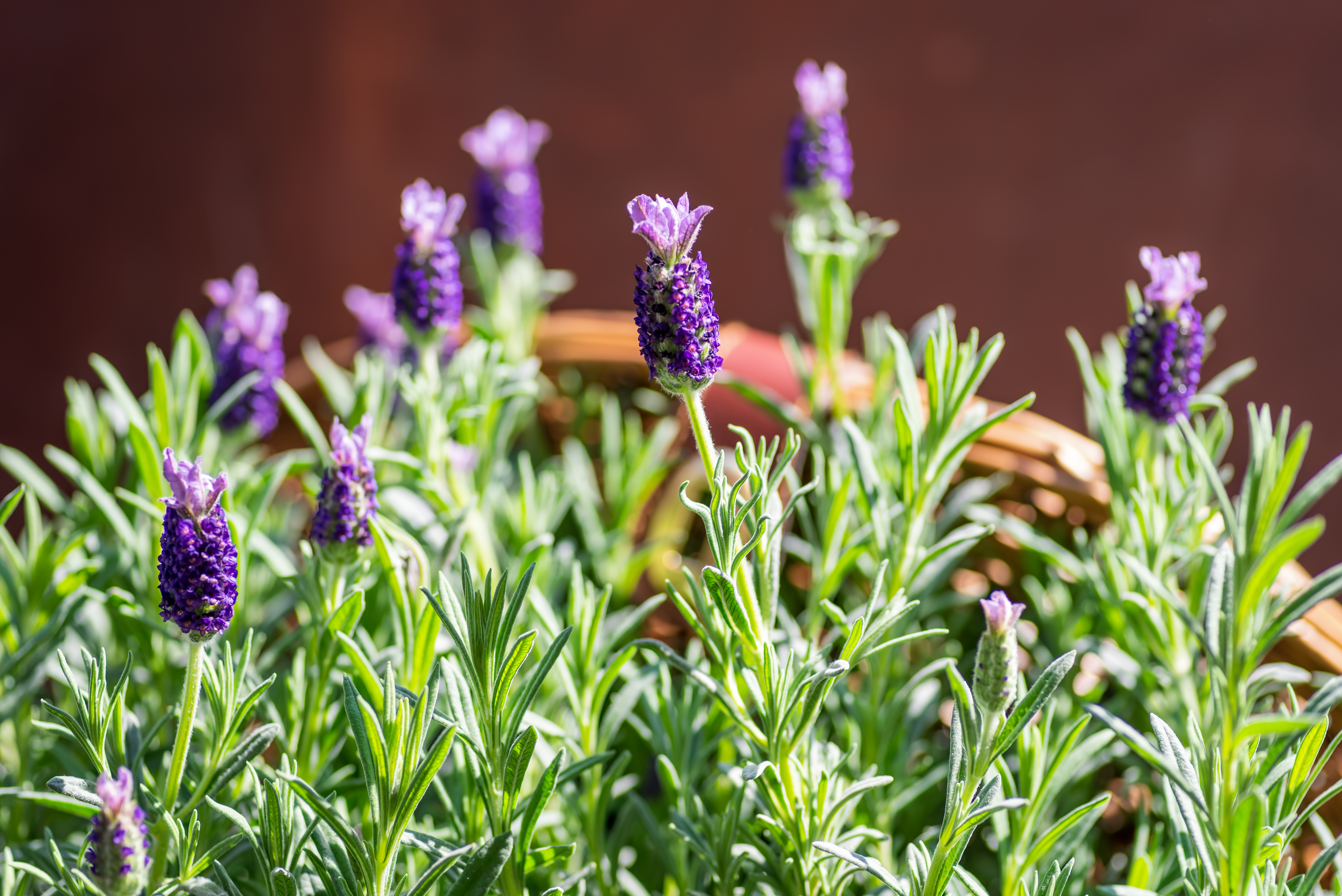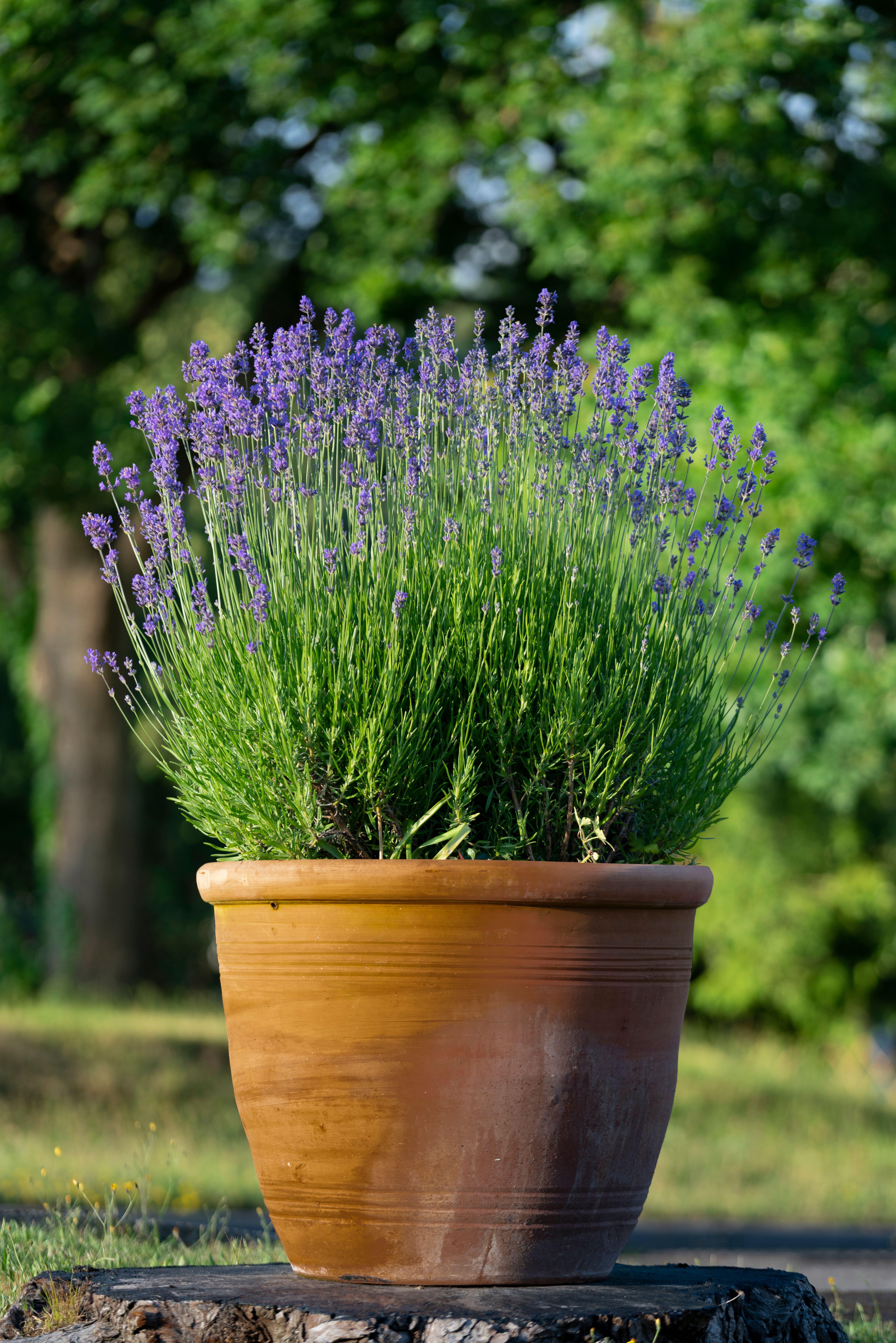
Floral, fresh and delicate — growing lavender in containers is a great way to spread the ultra-fragrant herbs sweetness around your backyard. Potted plants are also ideal if you're working with a small landscape, or simply want to have the freedom of moving your blooms to different parts of your outdoor living space. They're also fantastic companion plants and its strong, yet alluring scent can keep those pesky pests at bay.
'Lavender's delicate purple flowers and silver-green foliage create a visually appealing addition to gardens and containers, adding elegance and a Mediterranean vibe,' says Laura Janney, a gardening expert and founder of The Inspired Gardening. 'Its exquisite purple flowers and delicious fragrance are known for their calming and soothing effects, often used in aromatherapy. The scent also repels mosquitoes and other pests while attracting bees and butterflies. Lavender symbolizes purity, tranquillity, and healing'.
It's a relatively low-maintenance plant, but growing it in pots can make lavender plant care even easier. So, how exactly do you plant lavender in containers? Here's what a gardening expert has to say about it.
How to plant lavender in containers

Ask yourself the following questions while planting your lavender in a container:
· Did I choose the right pot?
· Did I prepare the soil well?
· Am I planting the lavender correctly?
· Have I watered my lavender enough?
Now that you've nailed down where to plant lavender, it's important to know exactly how to do it to get the best of of these fresh, dainty and loveable plants. Laura Janney, a gardening expert and founder of The Inspired Gardening shares some of her tips and tricks on the best way to plant lavenders in containers.
Step 1: Choose the Right Pot - Laura says the first step is to 'select a pot that is at least 12-16 inches wide. This size provides enough space for the lavender to grow. Ensure the pot has drainage holes to prevent water from accumulating, as lavender doesn't like too much wetness'.
Step 2: Prepare the Soil - The gardening expert advises to not use moisture control soil. Instead, she says 'mix half regular potting soil with perlite, sand, or pumice. This combination provides good drainage and prevents the soil from retaining too much moisture'.
Step 3: Plant the Lavender - 'Fill the pot with the soil mixture, leaving some space at the top. Place the lavender plant in the center of the pot, and fill in around it with the remaining soil mixture. Gently press the soil down to eliminate any air pockets'.
Step 4: Positioning and Watering - Find a sunny spot for your lavender pot. 'Place the pot in a location that receives full sun, as lavender needs plenty of sunlight to thrive. Water the lavender thoroughly after planting. Allow the soil to dry out completely between watering's to prevent root rot,' Laura adds.
Step 5: Ongoing Care - Now that you've planted your bloom, be sure to 'regularly check the soil moisture as lavender prefers dry conditions, so only water when the soil is dry to the touch. Ensure the plant continues to receive full sun and proper drainage to keep it healthy and flourishing'.
How to care for lavender

Now, how do you get these beauties to thrive when growing lavender in pots? Laura tells us: 'Lavender comes in various types, with perennial varieties often not blooming as prolifically after the first bloom compared to some annual varieties. To promote new growth, regularly deadhead blooms and fertilize the plant occasionally.
Once you've planted your blooms, be sure to give them some love and attention. You can so this by checking on:
Sunlight - This is important! Lavender is a flower for pots in full sun, and your containers need at least 6-8 hours of direct sunlight daily, so make sure you place your pot in an area with lots of great sunlight exposure.
Water - Container plants can often dry out if they're not watered properly. If you can see the soil in the pot is dry an inch down, it's time to give it a refresh of water. But be careful, you would not want to overwater your lavender as this can lead to droopy leaves and root rot. As lavender is drought-tolerant, you will only need to water these 1-2 times a week, depending on the heat.
Fertilizer - Lavender does not need much fertilizer and over-fertilizing can lead to excess foliage and fewer flowers. However, small amount of slow-releasing fertilizer, such as loam-based compost in the spring will help with flowering.
Pruning - Laura says: 'Pruning encourages bushier growth and results in more flowers. Prune lavender in early spring while it is still dormant. Trim about one-third of the plant back, and cut any dead branches all the way to the base. Avoid pruning in fall in colder climates, and do not cut into the woody sections, as this can damage the plant'. If you're looking for the right pruning tools, try hand pruners or pruning shears, like these from Amazon.
Price: $29.94
Was: $49.95
Best types of lavender for containers

Lavender's gorgeous fragrance is not the only thing I'm drawn to. The Mediterranean native comes in over 45 different species, with over 450 varieties. There are many to choose from, but remember, not all lavenders are hardy and some actually thrive better in containers than they would if they were planted in your garden. If you are searching for the right kind of lavender to plant in containers — here are two main species you should keep an eye out for as you embark on this container gardening journey.
Lavandula Angustifolia - Also known as the common lavender or English lavender, this is a evergreen shrub that can grow 1- 3 feet tall. For this species, flowering usually takes place from late spring to midsummer. With its small growth, this perennial is well-suited for containers. Climates best suited for this are zones 5-10, according to the United States Department of Agriculture (USDA). Try these seeds from Amazon.
Lavandula Stoechas - Known by many names including the French Lavender, Spanish Lavender or Butterfly Lavender, this blooms is quite the character with petals growing from the top of the plant. It love warmer climates and thrives in hardiness zones 8-9. Flowering for this tender perennial occurs from mid-spring to late summer. Try these seeds from Walmart.
FAQS
When is the best time to grow lavender in pots?

You've decided to take on the task of planting your lovely lavender in a container, but what is the best time to do this?
Well, Laura tell us: 'The best time to grow lavender in pots is during spring and early summer, after the last frost but before temperatures become too hot. This timing ensures optimal growing conditions for the plant'.
Can lavender grow in pots indoors?
'Yes, lavender can grow in pots indoors,' Laura says, but 'It still needs full sun, requiring 6-8 hours of sunlight per day. To achieve this, you may need to use a grow lamp. Make sure to water the lavender thoroughly once the soil dries out. While it's not the easiest plant to grow indoors, it is definitely doable with proper care and attention'.
Which is why learning how to care for lavender indoors is just as important as your outdoor blooms.







